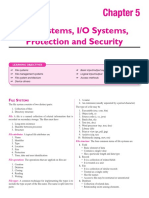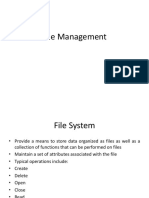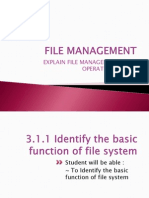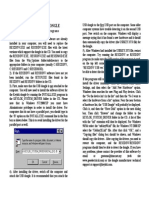0% found this document useful (0 votes)
42 views73 pagesLecture 10 File Management
The document discusses file management and organization. It describes desirable file properties like long-term existence and structure. Files are organized into hierarchical structures and accessed through file systems. File systems provide functions to store and retrieve files through operations like create, delete, open, close, read and write. Files have a structure of fields, records, files and databases. The document also discusses different file organizations like sequential, direct, indexed and B-Trees which provide various access methods and performance tradeoffs.
Uploaded by
achiengshila07Copyright
© © All Rights Reserved
We take content rights seriously. If you suspect this is your content, claim it here.
Available Formats
Download as PPTX, PDF, TXT or read online on Scribd
0% found this document useful (0 votes)
42 views73 pagesLecture 10 File Management
The document discusses file management and organization. It describes desirable file properties like long-term existence and structure. Files are organized into hierarchical structures and accessed through file systems. File systems provide functions to store and retrieve files through operations like create, delete, open, close, read and write. Files have a structure of fields, records, files and databases. The document also discusses different file organizations like sequential, direct, indexed and B-Trees which provide various access methods and performance tradeoffs.
Uploaded by
achiengshila07Copyright
© © All Rights Reserved
We take content rights seriously. If you suspect this is your content, claim it here.
Available Formats
Download as PPTX, PDF, TXT or read online on Scribd
/ 73
























































































